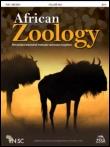Understanding fish movement patterns and migrations is important for fisheries management as well as the identification and conservation of critical habitats. Data collected by the Oceanographic Research Institute's Cooperative Fish Tagging Project (ORI-CFTP) were used to describe the large-scale movement patterns of Lichia amia along the South African coastline. A total of 10 762 L. amia were tagged between 1984 and 2012, of which 744 (7%) were recaptured. Most tagging effort, mainly on juvenile and subadult individuals, took place along the south-eastern (i.e. Eastern Cape) and south-western (i.e. Western Cape) regions of the country during summer. Conversely, more L. amia were tagged and recaptured (mostly adults) during winter and spring (July to November) along the north-east coast (i.e. KwaZulu-Natal). Movements (dispersal distance in kilometres) by juveniles were restricted and largely confined to estuaries within the south-eastern and south-western regions of the country. There was a significant effect of fish size on distance moved (ANOVA: p < 0.001), with evidence of a distinct seasonal (winter) longshore migration by adults to KwaZulu-Natal. The consequences of juvenile residency in estuarine habitats and high recapture rate of adults during a directed, seasonal spawning migration are discussed in light of improving current fisheries management.
How to translate text using browser tools
1 October 2016
Movement Patterns of Lichia amia (Teleostei: Carangidae): Results from a Long-Term Cooperative Tagging Project in South Africa
Stuart W Dunlop,
Bruce Q Mann,
Paul D Cowley,
Taryn S Murray,
Jade Q Maggs
ACCESS THE FULL ARTICLE

African Zoology
Vol. 50 • No. 3
October 2015
Vol. 50 • No. 3
October 2015
fisheries management
leervis
migration
movement behaviour
tag-recapture




